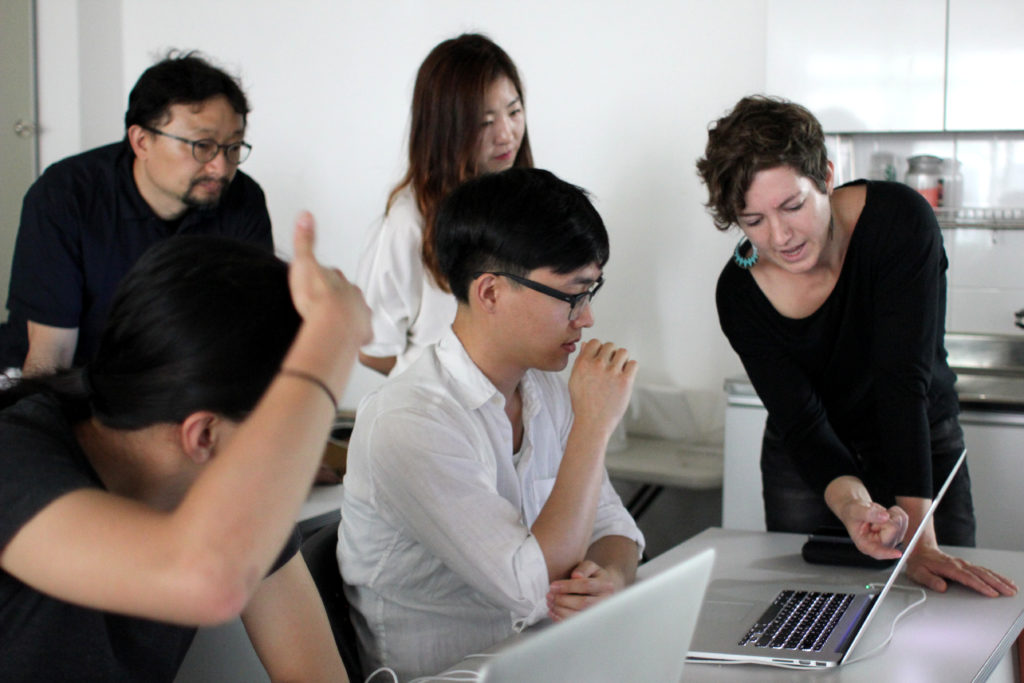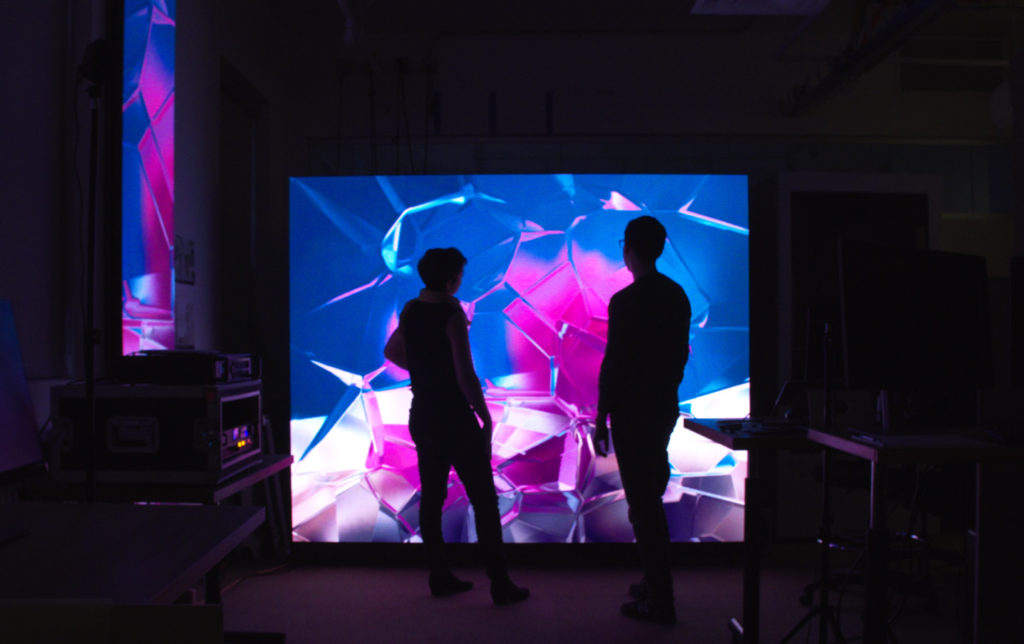ESI Design’s Mary Franck Teaches Computer Arts Course at SVA – Emerging Practices: The Experiential Image
Posted November 8, 2019
There may not be much room for fine art in Mary Franck’s daily schedule at ESI Design, but like many of her coworkers, Mary has found a way for external fine art practice to compliment her role as a Senior Designer of Creative Technology at ESI Design. During the fall 2019 semester, she is teaching a course titled “Emerging Practices: The Experiential Image” in the MFA Computer Arts (MFACA) program at the School of Visual Arts (SVA). As she works toward building the course into a three-part sequence of classes on Emerging Practices, she aims to help aspiring artists and designers hone their craft in innovative ways.

What path lead you to teaching this course?
Mary Franck: My background is in fine art and design — I studied fine art in undergrad, and the program that I was in was what I would now call an “emerging practices” course. I attended the Conceptual and Information Art program at San Francisco State University, and it focused on using new media and new technologies to further a conceptual art studio practice. Later, I studied at SCI-Arc doing architectural design research, but my perspective as an artist is something I’ve brought to my work for many years now. This is a way for me to return to some of my roots in artistic practice in a way that’s about furthering an artistic community by working with graduate students.
What do you hope your students get out of your course?
MF: The program that I’m teaching in is SVA’s MFA Computer Arts Program, and its concentration is in 3-D and computer animation. Within that program, there is a fine arts track, so I am working with fine art students who have a focus on animation. What I am attempting to teach them within this context is how to push their work into a fine art and artistic practice in terms of how to develop themselves and their work as artists as opposed to more of the commercial or design-focused track of the rest of the program.
The other aspect of that is teaching my students critical thinking and giving them a little more context around the work that they’re doing. From a more logistical perspective, it’s about giving them some new tools to take their work in new directions — whether that’s making work that’s interactive, or making their work into installations or a performance format.
Does what you teach compliment the work you do at ESI Design?
MF: The course very much parallels the work that I do at ESI Design. A lot of the techniques we use are related. In pushing animation students into doing work in these other formats such as installation or interactivity, it’s very much what we do at ESI Design. We take content that may otherwise be presented in a more passive way, and we make it into an experience. I think in that way it’s very much aligned with what we do here.
The other connection is that in teaching grad students, I think that my role is more about facilitating a productive group environment and helping to create a culture of supportive critique. That’s also part of my role as a lead designer at ESI Design, to foster the right discussions around our work as a team and with clients as well.

How is the course beneficial to students with career aspirations in experiential design?
MF: I think that from a technical perspective, part of my role is to bring popular and industry-standard tools into their workflows. On the other side of it, it is intended to be a fine art course and so it is more about developing students’ individual visions than making something that’s more commercially oriented.
What advice would you give to aspiring designers?
MF: When you’re young, it’s so much about honing your craft. Ira Glass has a great podcast about this where he talks about how he became a good storyteller by honing his techniques in editing long enough to get there. I think that it’s really important for someone starting out to know that you don’t have to achieve your whole career at once. I would also say that experiential design is a really exciting and growing field right now. It’s a great space to work in and I think that because it’s interdisciplinary and it’s an area of design that is growing, which transfers really well to the real world.
The field of experiential design has been growing and changing a lot in the last decade or so, as in the nature of what people think of as design. I think the growth of experiential design within that is kind of an expression of how designers need to be multidisciplinary and take more of a focus on the impact and outcomes of their designs. In traditional design, there is such a focus on forms and aesthetics, but design is a lot larger than that now, and I think experience design reflects that.
Is this multi-disciplinary approach reflected in the curriculum of your course?
MF: Not directly, but the way it shows up in the course is that I’m really pushing my students to think about what artistic possibilities are special about experience design, and to have that be something that helps them make choices. I think that it’s easy for students to focus on technology or technique to try to make their work better, but I am also trying to set them up with a conceptual framework of what they can uniquely do with experiential art. Having a framework will help them make better decisions about when to add more or take something away.
In what way is teaching this course a return to your roots?
MF: I spent a long time making real-time computer graphics and using those techniques, and it is nice to come back to that and try to hand those techniques to young designers. It makes me realize how much I have learned because I can take it for granted sometimes.

What kind of traits would you look for in a student to recruit them to ESI Design?
MF: So much of it is about motivation and their willingness to get something out there. A lot of the work we do has no right answer — it’s more about trying and iterating and being willing to go into the unknown. I think that’s something I look for in my students, but also in junior people generally.
If someone wants to learn more about what you’re teaching, what should they read?
MF: The readings are about art theory for this course, which does have a bit of a disconnect with experience design. I think the two people who are most interesting to me in terms of art theory are Christiane Paul, who is a curator at The Whitney and has been putting together some really brilliant digital art shows. She actually used to teach at SVA, and she is at the forefront of theorizing digital art. The other person who I think is really interesting is Katherine Hayles, who teaches at Duke. She is more of a philosopher, and she focuses on the way people are philosophically thinking about technology.
Is there anyone who treats computer-generated art and animation as a fine art that you admire?
MF: I think Casey Reas is someone who has been doing this for a really long time and has done a good job of making clear what is special about this kind of work in that it’s dynamic and can be connected to the world in pretty interesting ways. I also admire Camille Utterback, the MacArthur Genius whose work was collected by the Smithsonian as their first interactive art piece. Those are people who are pretty solidly in the art camp, but this field does connect all the way to design and commercial work. There are people who fall all over that spectrum — it’s never that clear cut.


Join The Conversation